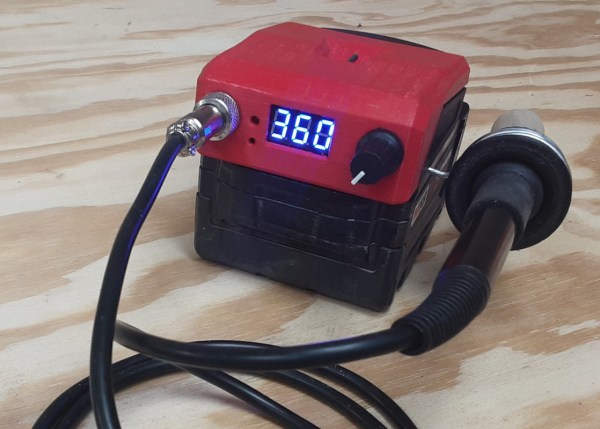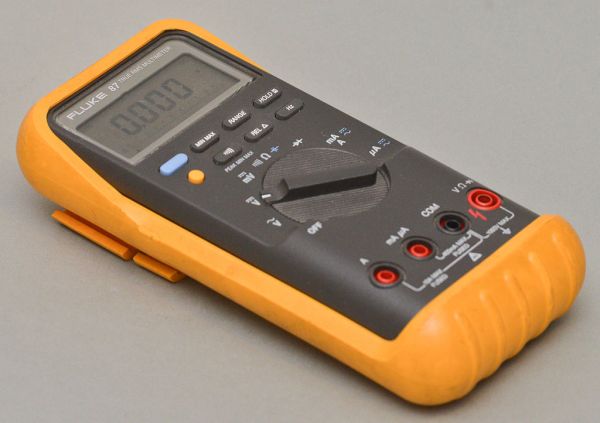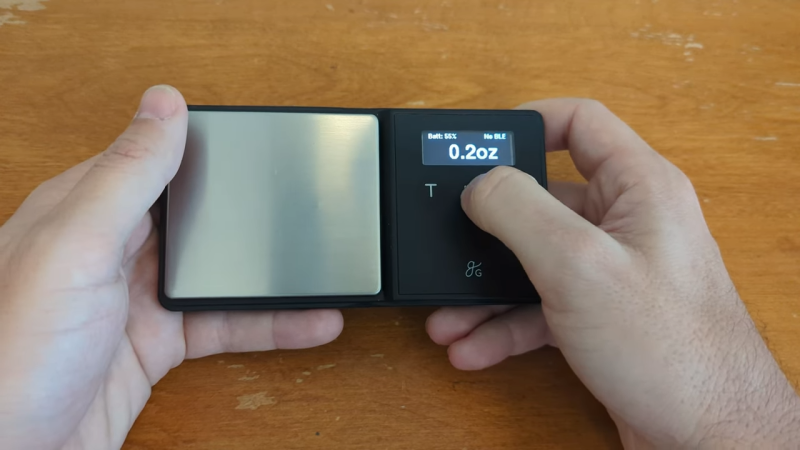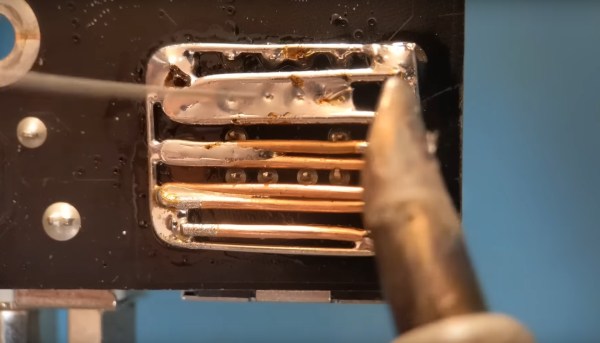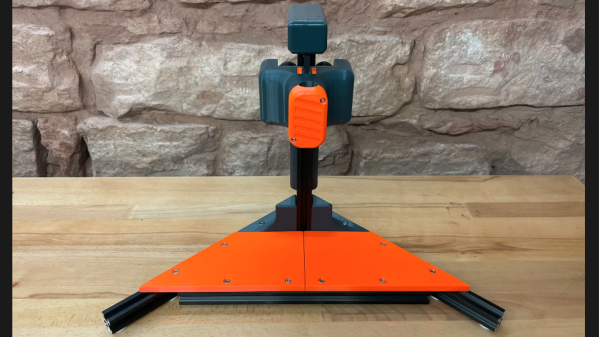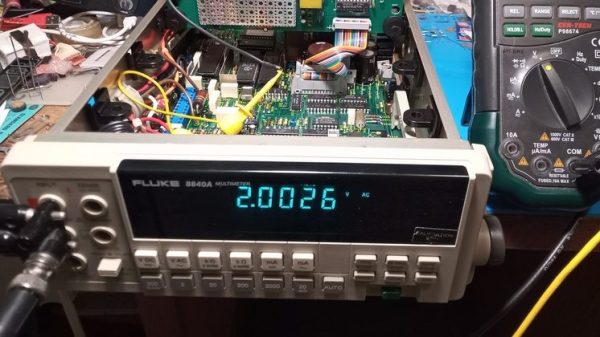Companies now are looking to secure revenue streams by sneakily locking customers into as many recurring services as possible. Subscription software, OS ecosystems, music streaming, and even food delivery companies all want to lock consumers in to these types of services. Battery-operated power tools are no different as there’s often a cycle of buying tools that fit one’s existing batteries, then buying replacement batteries, ad infinitum. As consumers we might prefer a more open standard but since this is not likely to happen any time soon, at least we can build our own tools that work with our power tool brand of choice like this battery-powered soldering station. Continue reading “Soldering Station Designed Around Batteries”
tools156 Articles
Your Multimeter Might Be Lying To You
Multimeters are indispensable tools when working on electronics. It’s almost impossible to build any but the most basic of circuits without one to test and troubleshoot potential issues, and they make possible a large array of measurement capabilities that are not easily performed otherwise. But when things start getting a little more complex it’s important to know their limitations, specifically around what they will tell you about circuits designed for high frequency. [watersstanton] explains in this video while troubleshooting an antenna circuit for ham radio.
The issue that often confuses people new to radio or other high-frequency projects revolves around the continuity testing function found on most multimeters. While useful for testing wiring and making sure connections are solid, they typically only test using DC. When applying AC to the same circuits, inductors start to offer higher impedance and capacitors lower impedance, up to the point that they become open and short circuits respectively. The same happens to transformers, but can also most antennas which often look like short circuits to ground at DC but can offer just enough impedance at their designed frequency to efficiently resonate and send out radio waves.
This can give some confusing readings, such as when testing to make sure that a RF connector isn’t shorted out after soldering it to a coaxial cable for example. If an antenna is connected to the other side, it’s possible a meter will show a short at DC which might indicate a flaw in the soldering of the connector if the user isn’t mindful of this high-frequency impedance. We actually featured a unique antenna design recently that’s built entirely on a PCB that would show this DC short but behaves surprisingly well when sending out WiFi signals.
The BLE Datalogging Scale Of A Thousand Uses
Whether you’re making coffee or beer or complex chemicals, weighing your ingredients carefully and tracking them is key to getting good results. [Tech Dregs] decided to build a logging scale that would work seamlessly with his smartphone, and shared the design on YouTube.
The design begins with a Greater Goods manual electronic scale, which was chosen for its convenient design and 750 gram load cell. Once cracked open, [Tech Dregs] pulled out the original PCB to replace it with his own. Only the original buttons are used, with an Seed Xiao ESP32-C3 replacing the scale’s original brains. The original LCD screen was swapped out for an OLED display, and it also got a rechargeable lithium battery for better usability.
The real value of the project, though, is its communication capability. It’s able to talk to an Android smartphone over Bluetooth Low Energy. Thanks to a custom app, [Tech Dregs] is able to log weight readings from the scale over time and even graph them live on the smartphone. As a demonstration, the scale is used to log the weight of a cup as it fills with a shot of coffee, which should serve [Tech Dregs] well in his coffee automation projects.
We’ve seen bathroom scales hacked before, too, with similar connectivity upgrades.
Continue reading “The BLE Datalogging Scale Of A Thousand Uses”
Finessing A Soldering Iron To Remove Large Connectors
One of the first tools that is added to a toolbox when working on electronics, perhaps besides a multimeter, is a soldering iron. From there, soldering tools can be added as needed such as a hot air gun, reflow oven, soldering gun, or desoldering pump. But often a soldering iron is all that’s needed even for some specialized tasks as [Mr SolderFix] demonstrates.
This specific technique involves removing a large connector from a PCB. Typically either a heat gun would be used, which might damage the PCB, or a tedious process involving a desoldering tool or braided wick might be tried. But with just a soldering iron, a few pieces of wire can be soldered around each of the pins to create a massive solder blob which connects all the pins of the connector to this wire. With everything connected to solder and wire, the soldering iron is simply pressed into this amalgamation and the connector will fall right out of the board, and the wire can simply be dropped away from the PCB along with most of the solder.
There is some cleanup work to do afterwards, especially removing excess solder in the holes in the PCB, but it’s nothing a little wick and effort can’t take care of. Compared to other methods which might require specialized tools or a lot more time, this is quite the technique to add to one’s soldering repertoire. For some more advanced desoldering techniques, take a look at this method for saving PCBs from some thermal stresses.
Continue reading “Finessing A Soldering Iron To Remove Large Connectors”
A Linux Distro For All Your Ham Needs
For anyone new to the world of ham radio, one of the things that takes a little getting used to is visiting the websites of authoritative experts in various fields and feeling like you’ve traveled back to the Internet of 1999. As a hobby that lends itself to extremely utilitarian amateurs, the software side can feel a little left behind like that. [Andy] aka [KB1OIQ], on the other hand, is also a Linux enthusiast and has been putting together a complete Linux distribution with everything needed to operate a radio in the modern era.
While most ham radio software seems to be developed for Windows, there is a lot available for Linux. It just takes a bit of tinkering and experimentation to get everything configured just right. Andy’s Ham Radio Linux, or AHRL, takes a lot of the guesswork out of this. The distribution includes everything from contact logging software to antenna modeling, propagation forecasting, and electronic design. While tools like this are largely optional for operating radios themselves, there are also tools included to allow the user to operate various digital modes as well, which require some sort of computer interface to use.
The other design consideration [Andy] made was something that most hams consider when choosing software, which is that it should be able to run on extremely modest hardware. To that end, the distribution is based around Xubuntu and can run on ten-year-old machines with as little as 2 GB of RAM. And, for those interested more in software-defined radio specifically, there is another Debian-based Linux distribution called DragonOS that we’ve featured a few other times as well which is also worth checking out.
DIY Heat-Set Insert Press Says Complicated = Comfort
Heat-set inserts are a great way to embed mechanically-strong, threaded parts into a 3D print. For installation, all that is required is an economical soldering iron; something most of us already have.
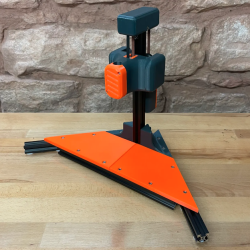
That’s fine for a handful of occasional inserts, but when a large number need to be inserted reliably and cleanly, something a little more refined is called for. That’s where [virchow]’s threaded insert press design comes in. It adds 3D-printed parts to an aluminum extrusion frame to create a press that smoothly lowers a soldering iron directly up and down, with minimal effort by the user.
The holder for the soldering iron is mounted to a small v-wheel gantry that rides along the vertical extrusion. The gantry features a counterweight to take care of resetting the position of the iron. [Virchow] admits that the design could be considered unnecessarily complicated (hence the “UC” in the name) but on the other hand, there’s nothing like doing a hundred or so inserts to make one appreciate every bit of comfort and stability.
Heat-set inserts aren’t difficult to use, but a little technique goes a long way. Spend a few minutes reading Joshua Vasquez’s guide on the optimal way to use them in 3D-printed parts to make sure yours not only go in straight but end up looking great as well.
A Homebrew AC Upgrade For The Fluke 8840A
[William Dudley] picked up a Fluke 8840A bench multimeter at an auction, but was sad to find out that it was reading resistances inaccurately. It was also missing the optional board to enable AC measurements. Desiring to use the otherwise lovely meter, he set about repairing and upgrading the device.
Thankfully, the 8840A was from a time when Fluke used to openly publish schematics in its manuals. Thus, combined with taking a look at some photos online, it was straightforward for [William] to recreate the original AC “Option 09” board to enable the desired functionality. As is usually the way, his efforts didn’t work first time, but after some bodge wires were installed, all was well. [William] reports the measurements are “reasonable, maybe even sufficient” with no calibration undertaken.
Repairing the resistance issue was easy. It turned out to be corrosion on the selector switches, revealed when high-resistance measurements were accurate, but low-resistance measurements weren’t. A bit of flick-flacker with some contact cleaner sprayed into the switches got things working again nicely.
It’s nice to see old hardware restored to full functionality, particularly when it’s as attractive and well-built as an old Fluke meter. Bringing back old tools from the dead? You know we wanna hear about it!

